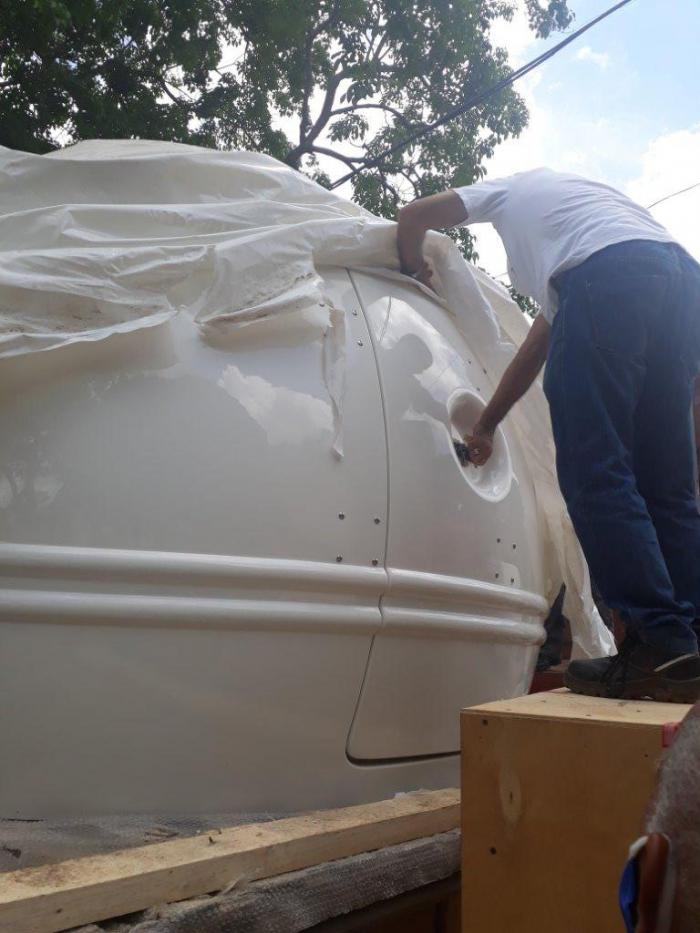
News and history of the first astronomical observatory in Cuba
Created in April 1964, after the merge of two institutions attached to the Cuban Academy of Sciences, the Institute of Geophysics and Astronomy (IGA in Spanish), belonging to the Environment Agency of the Ministry of Sciences, Technology and Environment, became a highly specialized research and development center, whose results respond to the country’s priorities in various sectors.
One of the first line of work considered in initiating ionosphere monitoring in the Greater Antilles, through the start –up of Soviet ais-type analog vertical sounding station, installed there in August of that year.
At the same time, a geomagnetic observatory was installed to monitor the different components of the magnetic field and its variations over time.
The acquisition and commissioning in 2012 of a modern Australian ips-42 digital station represented a qualitative leap in the regular monitoring of the ionosphere.
These two observatories (ionospheric and geomagnetic) respond to the needs of the different entities of the economy for the exploitation of the navigation and communication systems they have, in addition to the contribution of the forecast of different parameters of the ionosphere in certain periods of time, and the behavior of the propagation of radio waves in Cuban territory, to cite some examples.
Raising the bar
Zulia Bárcena Fonseca, IGA’s deputy scientific director, pointed out to Gramma journal that the institution pays especial attention to the Sun’s activities, taking into account the impact it has on the multiple aspects of modern life.
She indicated that the Havana Radio Astronomical Station and the Cacahual Solar Optical Station, both operated by IGA specialists, are available to make observations of the Sun. The emphasis of this monitoring is focused on the appearance and evolution of sunspots, she said.
“Our observations are daily reported to the World Data Center, because that is where all the information sent by similar stations around the planet goes to contribute to the calculation of the index that quantifies solar activity”.
This is vital in the establishment of early warnings of possible explosions of the Astro King and their potential consequences on the Earth’s space environment.
It should be noted that depending on the reached intensity, these can trigger phenomena such as aurora borealis, geomagnetic storms and ionosphere’s disturbances, capable of affecting navigation and communications systems, electrical transformers, long-distance oil and gas pipelines, satellites and spacecraft.
According to the Deputy Director of IGA, solar activity is currently receiving more and more attention in the variability it causes to Earth’s climate and in climate change on a global scale.
Another line of research undertaken by the institution in recent years is linked to monitoring of atmospheric electric field, through a station dedicated to this purpose, that detects the presence of electric discharges within 48 km radius and warns when they are about to happen.
The possibility of providing an early warning service for the country to prevent and mitigate damage caused by such a dangerous atmospheric phenomenon is currently being considered.
Among the recent results of IGA, there is the development of a modern station for detecting Schumann resonance, which is a type of electromagnetic wave that influences biological processes.
As a result of collaboration agreement with the Institute of Geophysics of the Autonomous University of Mexico, once it begins to operate it will get extremely useful data for the study of certain phenomena of the Sun on human health.
It will also provide relevant data on climate variability on Earth and weather’s state, together with the possibility of making long-term forecasts on major earthquakes, a subject on which many specialist in the World, including Cuban scientists, are researching.
According to Bárcena Fonseca, scientific collaboration with several institutions of the Russian Academy of Sciences has been strengthened in recent years, which includes among its vital points the renewal of observation and monitoring technologies for both, solar activity and celestial objects located at different distances from Earth.
She described as a real milestone the announced installation, at the IGA, of a new Russian automated telescope of great scope(already in Cuba)which will guarantee a wide range of observations of cosmic bodies, space debris and the strengthening of our system for monitoring sidereal debris.
This precedes the arrival of other instruments and technology from that country, to conform first rate astronomical observatory that will make possible the gathering, analysis and use of information in real time, together with the exchange and link to other international stations.
The IGA undertakes basic and applied research aimed at the study of the ionosphere, the Magnetosphere and its relationships, the geo-effectiveness of solar activity and the influence of electromagnetic wave propagation and other spheres.
It also undertakes magnetic modelling of terrestrial systems, mapping and modelling of geological hazard, scenarios for karst development, associated with sea level rise and groundwater as a result of climate change, and disaster risks studies of natural, technological and health hazards.
It provides technical and technological services of great value, including the determination of the true north for antenna orientation purposes used in aeronautics, instrument calibration and the installation of protection systems against electrical storms in buildings and open spaces.
Source: Gramma